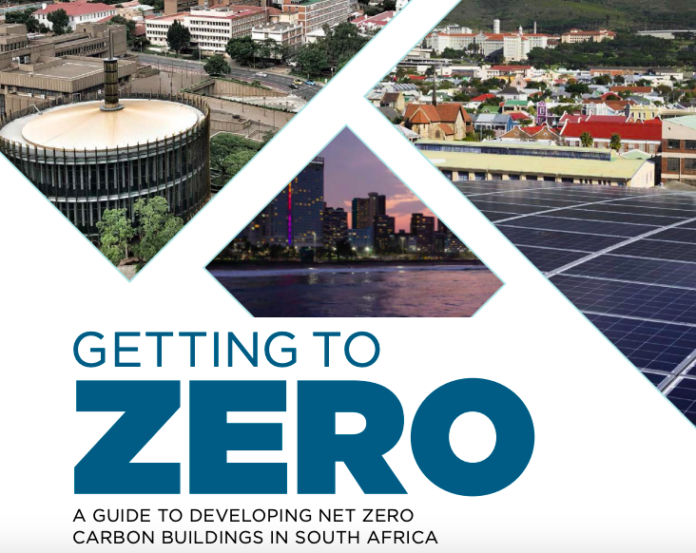GETTING TO ZERO: A guide to developing net zero carbon buildings in South Africa gives a thorough overview on net zero carbon buildings in South Africa. It provides guidance to professional teams considering developing a net zero carbon building and shows those shaping the built environment in South Africa that it is possible.
While it may be considered ambitious, it is certainly achievable.
Sparked by engagement between the American Society of Heating, Refrigerating and Air-Conditioning Engineers (ASHRAE) and the eThekwini Energy Office, the guide is a collaborative production, led by the ASHRAE South Africa Chapter with input from the C40 South Africa Buildings Programme, Sustainable Energy Africa (SEA), and the Green Building Council South Africa (GBCSA).
When it comes to getting a building to net zero carbon status, the basic idea is to reduce energy consumption as much as possible, and then to provide the building’s minimal energy needs through renewable energy. Exactly how this can be done, is explained in this guide.
For those keen to take the sustainability of their property to the next level ahead of regulatory changes that will make higher efficiencies in buildings mandatory, this guide can assist.
GETTING TO ZERO gives practical tips on how net zero carbon can be achieved. From identifying the right people to have on your project team, to the actual energy use intensity of lighting and mechanical equipment that should be targeted in a commercial building. Furthermore, it highlights renewable energy considerations to bear in mind on your project.
The guide features numerous case studies, showcasing projects that have already achieved net zero carbon status. These projects provide inspiration and share learning to motivate those seeking to make net zero carbon a reality.
Local context
GETTING TO ZERO emphasises that building energy use intensity should be about one-third of current standard practice in South Africa. It advises of ways to reduce the energy use intensity, through passive design, building simulation and highly efficient active design/mechanical equipment and appliances.
It details the most effective passive design strategies to use in the South African context. And when implementing active systems such as air conditioning, it gives the pros and cons of different systems and guidance on choosing the most effective systems for particular regions in South Africa. The guide also highlights some of the intricacies of the renewable energy landscape in South Africa.
The imperative
Reliance on fossil fuels to power buildings and cities damages the health of our people and our environment. The building sector has the potential for significant greenhouse gas emissions reduction at a lower cost than many other sectors.
The motivation for net zero carbon buildings is driven by South Africa’s national and local climate change commitments, including the C40 Global Net Zero Carbon Buildings Declaration. Johannesburg, Tshwane, Cape Town and eThekwini are C40 cities and signatories to the 2018 declaration, alongside 24 other global cities. These cities have committed to developing regulations and/or planning policy to ensure new buildings operate at net zero carbon by 2030 and all buildings reach net zero carbon status by 2050.
Meeting these commitments will require a step change in building energy efficiency policies and regulations in most cities.
The biggest challenges facing the uptake of net zero buildings are challenges of perception (when people think it’s more difficult than it is), technical challenges and financial challenges. All of these are being rapidly overcome.
Technically, it is absolutely possible to achieve net zero carbon buildings. It requires determination and enabling building standards, bylaws and policies to make it happen at scale. Critical mass of net zero carbon buildings is required to meet political and planetary climate goals.
GETTING TO ZERO: A guide to developing net zero carbon buildings in South Africa is freely available and can be downloaded here.



